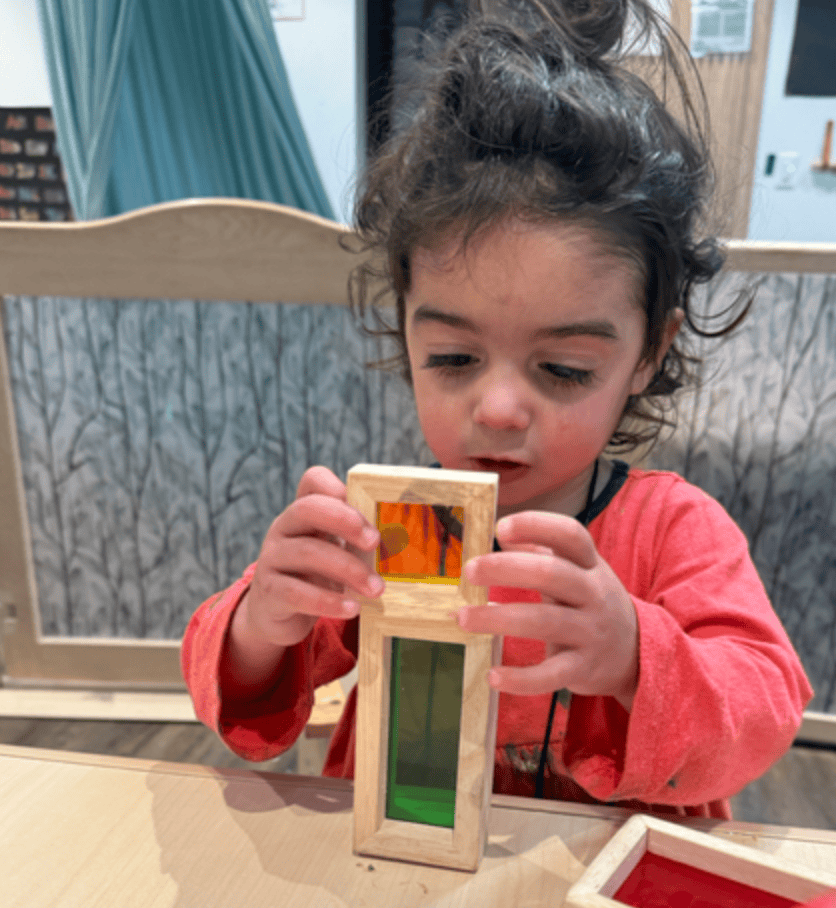
To teach toddlers colors in a fun way, incorporate activities like color sorting with everyday objects, creating color-themed scavenger hunts, and using sensory play with finger paints or shaving cream. Making learning interactive and engaging, such as through games like “I Spy” or gross motor activities, can also be very effective.
Introducing toddlers to colors is both exciting and foundational for their cognitive and language development. By weaving color learning into daily routines and playtime, you offer them an experience that feels like fun—not a lesson. Below, you’ll find engaging, research-backed activities to help toddlers grasp colors joyfully and effectively.
Why Color Learning Matters
Recognizing and naming colors is more than memorizing names—it builds attention, vocabulary, and visual discrimination skills. According to early childhood development specialists, sorting and categorizing by color encourages cognitive flexibility and problem-solving. Plus, language exposure—naming colors together—boosts vocabulary growth and expressive skills.
1. Color Sorting Games
Simple Sorting
Invite your toddler to sort everyday items—like balls or socks—by color. It’s a low-pressure entry to color awareness that reinforces object categorization, a key cognitive skill.
DIY Color Containers
Use colored bowls, cups, or baskets paired with items (e.g., red apple, blue car). Let your toddler match items to their corresponding containers. This helps reinforce color recognition through association.
Color Scavenger Hunt
Draw or print out paper “color zones” (such as blue, red, green), and ask your child to find objects around your home that match each color. This game enhances visual attention as they actively seek and distinguish colored items.
2. Sensory Color Play
Finger Painting
Finger painting with toddler-safe or edible paints lets children mix colors freely. Watching colors blend—like red and yellow becoming orange—introduces them to cause and effect and color mixing in a tactile way.
Shaving Cream Color Bin
Mix food coloring into shaving cream and let toddlers explore the swirling textures. The sensory experience deepens color-to-texture association, rich with learning and creativity.
Rice or Bean Bin Sorting
Dye rice or beans in different colors, then hide small colored toys within. Toddlers can dig and sort by color, reinforcing fine motor skills, sensory discrimination, and visual sorting.
3. Active, Color-Based Games
Color Stomp
Place color mats or post-its on the floor and call out colors for your little one to hop or stomp on. This game blends movement with learning, promoting gross motor coordination and color recall.
Color Tag
In a variation of tag, the child who’s “it” calls out a color. Whoever’s tagged must run to something that color in the environment. It makes learning mobile and dynamic.
“I Spy” with Colors
Play “I spy with my little eye… something red!” It’s a classic game that challenges toddlers to scan the environment and practice color identification.
4. Everyday Learning Moments
Nature Walks
Encounter colors in the natural world—green leaves, brown tree bark, red flowers. Connecting colors to nature fosters observation skills and real-world connection.
Coloring and Drawing
Offer crayons, markers, or colored pencils. As toddlers draw, label colors (“That’s a blue circle!”) to strengthen color naming and creative expression.
Read Color-Themed Books
Books like Brown Bear, Brown Bear, What Do You See? or Mouse Paint are wonderful for reinforcing colors through story and repetition. Shared reading builds language development along with color awareness.
5. Smart Tips for Teaching Colors
-
- Start with primary colors (red, blue, yellow) before introducing secondary ones. It simplifies the learning curve.
- Label colors in everyday life—in clothing (“You’re wearing a yellow shirt!”) or meal time (“Here’s your orange slice!”)—to reinforce naturally.
- Keep activities short and varied. Young children have limited attention spans, so rotating go-tos helps keep engagement high.
- Be patient and encouraging. Celebrate mistakes and successes. Each toddler learns at their own pace, and your gentle guidance strengthens confidence.
Putting It All Together – Sample Day Plan
Morning Play: Warm up with a brief sorting game—“Let’s separate yellow blocks and blue blocks!”
Midday Snack: Talk through colors—“I see red strawberries and green kiwi!”
Afternoon Craft: Let them paint or mix colors. Narrate what happens—“Red plus blue makes purple!”
Evening Wind-Down: Read a color-focused book together, naming the colors as each page turns.
Backed by Research
- Sorting objects by attributes like color strengthens executive functioning—helping children plan, focus, and solve problems.
- Sensory play is shown to boost cognitive development, language learning, and even emotional regulation.
- Movement-based learning—like games or art—helps toddlers retain new concepts through active engagement.
Combining color recognition with sensory, motor, and language learning makes teaching both fun and effective.
Teaching toddlers their colors doesn’t require formal lessons or worksheets. With lively activities—sorting games, paint play, nature walks, and storytime—you can make colors vivid, memorable, and delightful. Your encouraging presence turns everyday exploration into discovery and development.
Let me know if you’d like me to include curated downloadable printables, book recommendations, or even seasonal spin-offs (like holiday color hunts). I’d love to help make it even more interactive!
Sources on Sorting & Matching Games
- Baba Me – Benefits of Sorting Games for Toddlers:
“These seemingly simple games […] lay the foundation for a myriad of cognitive and motor skills.”
https://babame.com/benefits-of-sorting-games/ (Baba Me)
- Blooming Early Years – Benefits of Sorting Activities:
Notes that sorting promotes cognitive, fine motor, language, and early math skills.
https://bloomingearlyyears.com/sorting-activities/ (bloomingearlyyears.com)
- How We Montessori – Why matching/sorting is good for brain development:
Focuses on how matching helps with memory, categorization, and neural connections development during a critical growth period.
https://www.howwemontessori.com/how-we-montessori/2013/08/why-matching-sorting-and-categorising-is-good-for-their-brain-development.html (howwemontessori.com)
- Playgroup WA – Why sorting & matching is important for young children:
Explains how such activities support visual perception, memory, attention, and problem‑solving, along with language development.
https://www.playgroupwa.com.au/why-sorting-and-matching-is-important-for-young-children/ (PlaygroupWA)
- Lovevery – Matching & Sorting: A Cognitive Breakthrough:
Highlights how these everyday skills are the foundation for math concepts like counting, addition, subtraction, and patterns.
https://blog.lovevery.com/skills-stages/matching-and-sorting/ (Lovevery)
Sources on Sensory Play & Learning Through Play
- Cleveland Clinic – Benefits of Sensory Play for Your Child:
Sensory play helps with language development, fine and gross motor skills, cognitive growth, emotional regulation, and social interaction.
https://health.clevelandclinic.org/benefits-of-sensory-play-ideas (Cleveland Clinic)
- Preschool Rock – Sensory Play for Toddlers: 7 Brain-Boosting Benefits:
Discusses how sensory play builds brain pathways, improves memory, enhances language, and supports emotional regulation.
https://preschoolrock.com/7-cognitive-benefits-of-sensory-play-for-toddlers-you-should-know/ (preschoolrock.com)
- HappyDayPlay – Embracing the Colors of Development with Sensory Art:
Sensory art doesn’t just boost creativity—it supports cognitive skills, motor development, language, emotional expression, and even social interaction.
https://www.happydayplay.com/expert-articles/x4a7xyftnmiskz3tiixfy2cpjzjk65 (Happy Day Play, Inc. Early Learning)
Sources on the Importance of Play & Color Learning
- Wikipedia – Learning Through Play:
Describes how play fosters brain development, supports the prefrontal cortex, and builds skills like problem-solving, language, and emotional growth.
https://en.wikipedia.org/wiki/Learning_through_play (Wikipedia)
- StoryChanges – Why Color Is Significant to a Child’s Development:
Highlights how color recognition contributes to object recognition, descriptive language, and memory and pattern development. https://storychanges.com/why-color-is-significant-to-a-child-s-development.html (Story Changes)

